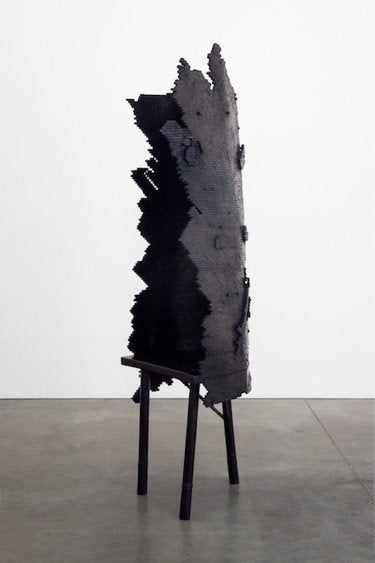
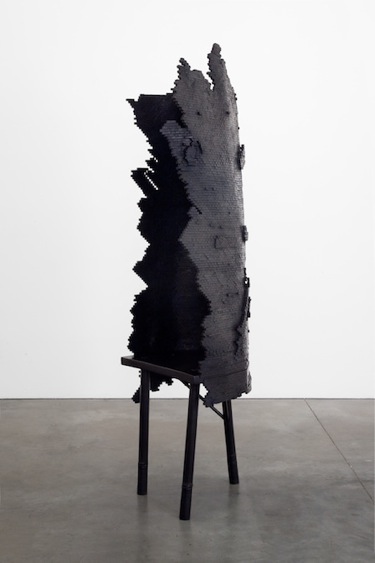
"Untitled (Masothrone)" courtesy Ramiken Crucible and Andrea Rosen Gallery, New York
Growing up in Michigan during the 1970s and 1980s, I was terrified by the specter of nuclear holocaust (The Day After-style). My family, part Transylvanian, had arrived in the U.S. prior to the start of the Cold War. But on the other side of the Iron Curtain, Andra Ursuta -- a Transylvanian artist who grew up during the Ceauşescu regime -- was unconcerned. "I think it was very clear to all of us that nobody was going to drop any bomb," she says. "We didn't take it as seriously as people did in the States."
All artists draw on their surroundings for creative inspiration. For Ursuta, in an isolated town near the border with Hungary, that meant growing up in an environment that combined superstition with a literal interpretation of the Bible. As a young girl, she conceptualized the Resurrection as a sort of traffic jam of corpses rising from the centuries of layered coffins in cemeteries. "Death was all around me," Ursuta says, referring to the nearby massive slaughterhouse and salami factory.
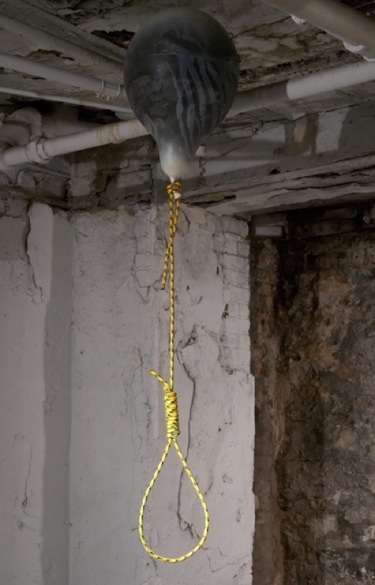
"Breath Hold (Discipline and Vanish)" courtesy Ramiken Crucible
One manifestation in her current work is "Breath Hold (Discipline and Vanish)," a replica of a large helium balloon with a rope cord fashioned into a noose, as a make-believe object to float a suicide victim far away from family members who might discover the corpse. Says Ursuta, "it's a really shitty thing to put someone through." She refers to this work of art as "a fairy tale or a childish solution to a very real problem."
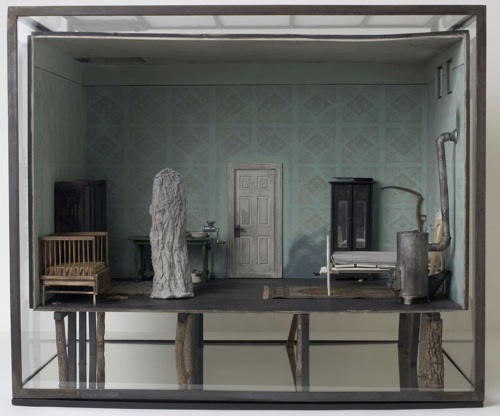
"T. Vladimirescu #5, an International Psychic Maneuver" and detail, courtesy Ramiken Crucible
Ursuta turns her lens inward with "T. Vladimirescu #5, an International Psychic Maneuver," a model of the house she grew up in. Says Ursuta, "I didn't think of it as art, as I was making it. I had a really intense upbringing and have very bad memories around it, so I thought of this piece as more of a talisman or charm." At that time, people made the things they couldn't buy, so her home's furniture was creatively improvised. Her family slaughtered a pig every year, and made all sorts of meat products from it, including soap (even the bones weren't wasted). When her house was finally demolished to make way for a supermarket, Ursuta says, "I was relieved my wish came true."
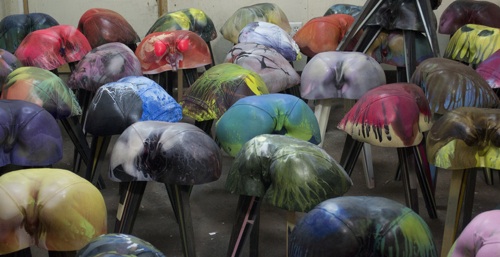
"Resurrected Little Bimbo," "Orphan Gymnast Vampire" and others, courtesy Ramiken Crucible
Amidst this raw, physical awareness of death, Ursuta's art dives headlong into issues of sexuality and the female form. Says Ursuta, "when someone sees my work as anti-feminist, I think that's a very good thing. Giving voice to these anti-feminist attitudes that are floating around becomes a willful gesture and an act of resistance." Her polyurethane chairs, made from molds of her upturned buttocks, are reminiscent of a porn shoot when multiple women are offering their behinds to the camera. The chairs straddle each other, further removing their human element. Says Ursuta, "whenever I recognize I'm afraid of something, I have to expose myself as a coward or put myself into that embarrassing situation immediately." When Ursuta feels a vestigial misogynist reaction arising, she says, "I have the choice to actually give voice to it or not, and if I do, it's always as if it's a joke, and I feel like it's OK to do that and it's OK to sort of perform your misogyny in a very silly way."
From vivid biblical literalism to Cold War deprivation, and from slaughterhouses to subtle misogyny, Andra Ursuta has taken the raw material of her experience and reshaped and reframed it. Today, Ursuta says, she cannot look away from horror: she has to run toward it, meld with it, and put her own stamp on it.
Find out more about her work and life in the video below.
See Ursuta's latest work in her current show "Magical Terrorism" at Ramiken Crucible, September 15th to October 12th, 2012.